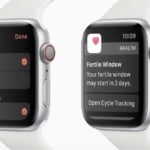Micro-learning
Micro-learning is a learning approach that involves breaking down complex topics or concepts into small, easily digestible pieces of information. This is an important approach because it allows learners to focus on one topic at a time and learn at their own pace. It can also be more engaging and effective than traditional, long-form learning methods.
However, there are also some potential pitfalls associated with micro-learning. One of the main challenges is that it can be difficult to determine the right amount of information to include in each micro-learning unit. If the units are too small, they may not provide enough context or depth to be meaningful. On the other hand, if the units are too large, they may not be easily digestible and may not provide the desired level of engagement. Additionally, micro-learning may require learners to have access to technology and a reliable internet connection, which may not be available to everyone. Finally, micro-learning may not be suitable for all learners or all learning objectives, and may not always be the best approach for achieving learning goals.
Finding time to learn new skills or keep up with advances in your chosen work field is tough, especially for those who work in tech. Thus, some entrepreneurs have introduced learning apps that deliver short, “bite-sized” seminars, lesson plans, and instruction to those too busy to take classes, study, read full-size books or other tracts, or otherwise keep up-to-date with traditional learning.
Blinkist distils the best ideas and insights from more than 1,500 bestselling nonfiction books into 15 minute reads or sound bites. Google Primer delivers five-minute tutorials on the latest information on digital marketing.
With little slow down expected in most people’s busy schedules, such bite-sized learning apps will undoubtedly continue to proliferate.


